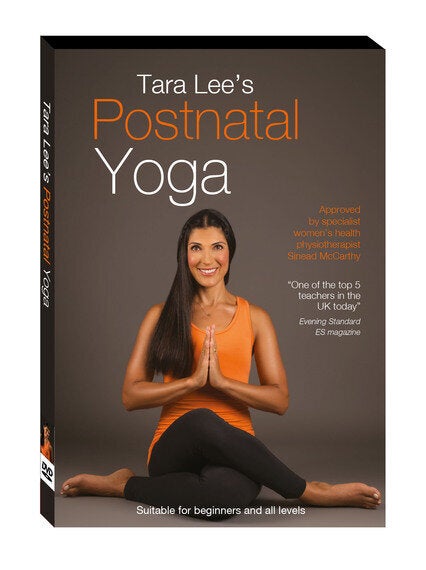After giving birth many women are shocked to discover that their pelvic floor muscles have weakened and are suddenly difficult to feel. As Kate Winslet recently bravely and publicly admitted, bouncing on trampolines after babies is potentially hazardous.
If you find yourself, as many women do, needing to cross your legs before you sneeze or cough, or are caught out when running for the bus with a full bladder or if the worry of leaking is holding you back in life, a visit to a women's health physiotherapist is a must. A specialist can give you an assessment of the muscles and guidance on the many treatments and helpful strategies available.
The good news is that exercise and awareness can really help. The yoga tradition has a focus on mula bandha - translating as "the root lock", often considered as the energetic closing of the base of the pot. Mula bandha is a very powerful but subtle practice, it links to the physical action required to strengthen the pelvic floor. Specialist women's health physiotherapist, Sinéad McCarthy advised in the making of my Postnatal Yoga DVD that although kegels are a must for strengthening the muscles of the pelvic floor, there are many other factors we should consider to make them even more effective.
Here are five of the points included in the DVD that may be of use in understanding how to improve the function of the pelvic floor after birth.
- Good posture is very important for the function of the pelvic floor. Tightness in the chest and mid back can affect the function of the pelvic floor. Think of the body again as a pot, a whole unit that is connected from top to bottom. If the top of the pot is tight and constricted, the bottom of the pot gets over-worked, over- stretched and easily tired. Good posture involves stacking the rib cage over the hips, not slouching forwards or tucking the tailbone under. Yoga helps us focus on how to achieve good posture and specific poses such as Tadasana (mountain pose) may be particularly helpful.
- The pelvic floor and the diaphragm work together to support full complete breathing, and muscle balance within our core. The nervousness of incontinence can often cause us to hold or restrain the breath - but in doing so we weaken the pelvic floor further. Learning how to take a full complete breath can help the pelvic floor function, and we use this type of breathing throughout yoga classes. The DVD shows a breathing sequence to help the breath become more complete.
- The pelvic floor works best when in balance with the gluteal muscles. Weak buttocks can result in a tight pelvic floor as the muscles compensate to try and bring more stability. A tight pelvic floor exhausts quickly which can contribute to incontinence. Strengthening the buttocks, can help to balance the action of the pelvic floor.
- The pelvic floor doesn't work in a straight up and down action. It is most effective if you engage the muscles in a scooping action. Practice lifting the pelvic floor from the back to front. Think about lifting from the back passage up towards the pubic bone and drawing up through the bladder to make the exercises more effective. It may be helpful to come to all fours with the forehead resting on the hands and the hips high to feel the muscles more easily engaging. You should not be sucking in your tummy or squeezing your inner thighs to feel these muscles working.
- There are fast twitch and slow twitch muscles which both need working.It is important that we maintain good tone in our muscles to help support the bowel, bladder, and uterus, and to prevent urine from leaking out of our bladder involuntarily. This is why a big part of pelvic floor strengthening involves the muscle action of elevating our pelvic floor and holding for an extended count (working the levator ani). Aim to achieve approximately a 10 - 15 second hold, that you can repeat 10-15 times in a set. We have to work the slow twitch fibers of these muscles daily to maintain healthy tone after having a baby and also as we age. These muscles can also become weaker after abdominal surgery, heavy lifting, hormone changes, or with obesity. It is also important to work the fast twitch fibres within our sphincter muscles. Our sphincter muscles can contract with significant force when we cough, laugh, sneeze, jump, etc. These fibres don't require holding as much as a quick contraction and release. We can work these fast twitch fibres by following the set of slow holds with 10 - 15 quick squeeze and release movements.
The great news is that often with time and effort, muscular strength can be regained and your pelvic floor can become reliable again. You'll be free to sneeze without having to cross your legs, be able to do star jumps with vigour in your gym class and bouncing on a trampoline may even become a possibility!

Tara Lee has been practicing yoga for over 20 years and has been teaching for 12 years.
Tara has taught thousands of pre and postnatal women.
Postnatal Yoga with Tara Lee is now available (www.amazon.co.uk).
Tara currently teaches 'Pregnancy Yoga', 'Mother and Baby Yoga' and 'Vinyasa Flow Yoga' at The Life Centre, Notting Hill Gate in London.